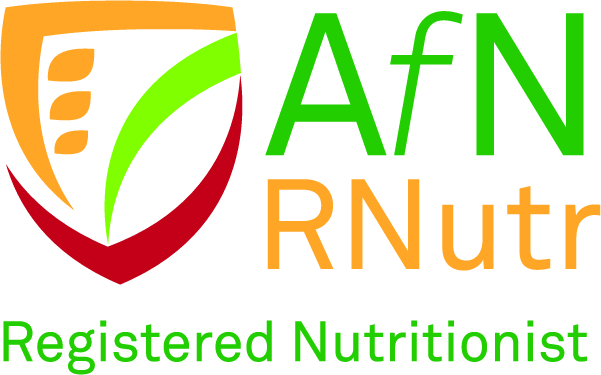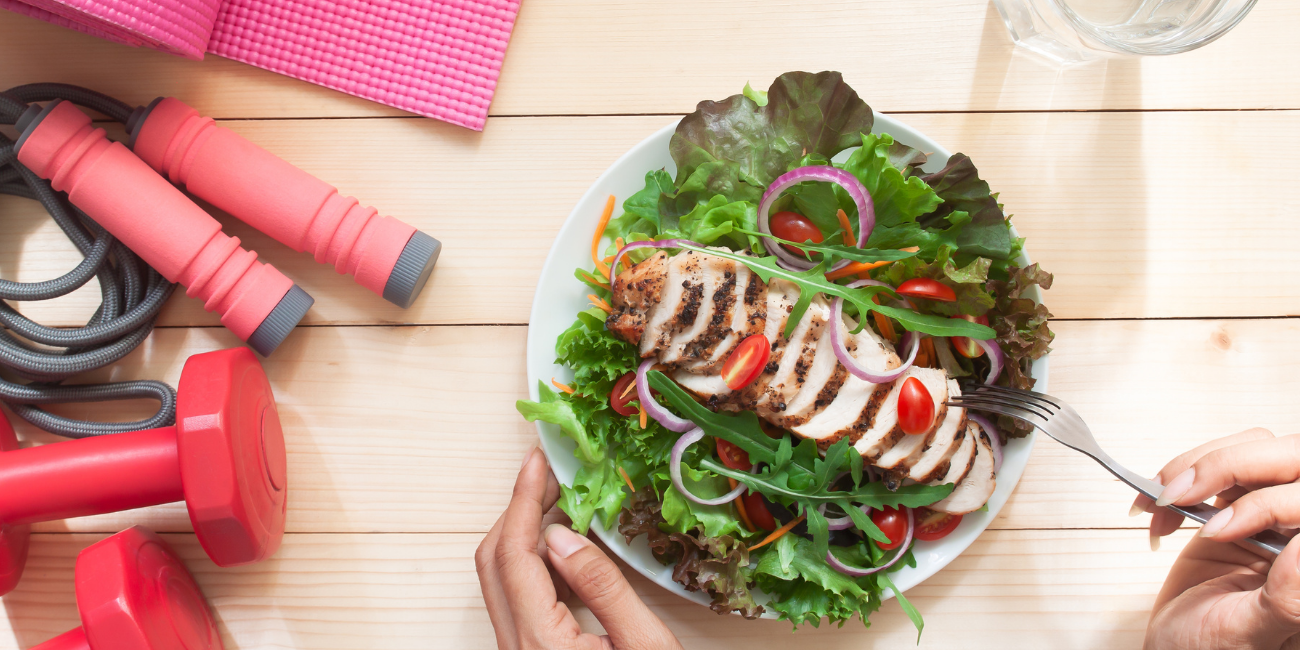Sports Nutrition
Maximise Your Performance
Regular exercise is so good for our physical and mental health, but if you want to maximise your performance it’s good to know what to eat and when to eat it!
I’ve worked with Sports Nutritionist Francesca Straniero to give you some top tips.
Introduction
There is a strong relationship between sport and nutrition – to enhance the performance, ensure a better recovery and reduce the risk of injury it is crucial to provide enough energy (and nutrients) to the body. This means having a diet that includes a variety of foods that provides nutrients (carbohydrate, protein and fat) to support physiological functions, muscle mass growth and body recovery.
If you exercise on a regular basis or you are a professional athlete, you don’t have to substantially modify your diet. However, knowing what to eat and when is crucial to enhance your performance.
Five Goals
In general, when thinking of sports nutrition, five goals should be considered:
- Eat a well-balanced diet which includes a variety of foods. Spread meals and snacks out evenly during the day, to supply energy and nutrients.
2. Choose foods that contain carbohydrates based on your level of physical activity
3. Eat at least 5 portions of fruit and veg every day (every form counts – fresh, frozen, dried and canned)
4. After exercise, try to refuel as soon as possible with food rich in carbohydrates and fluids
5. Keep an eye on hydration status – remember to drink before, during and after exercise to avoid dehydration
In practical terms, athletes have higher energy requirements than the average population due to their increased energy expenditure – but what does a sports person need?
Carbohydrates
The main substrate used by the muscles during exercise is glucose. In general, your carbohydrates requirement will depend on the type, intensity and duration of physical activity carried out. On one hand, for low intensity activities (yoga, Pilates, etc.) the recommended daily intake is around 2-3 g/kg body weight. On the other hand, for high intensity training (such as endurance or extreme events) the suggested carbohydrates intake is roughly 6-10 g/kg body weight per day.
Fat
Another essential source of energy that should always be present, in moderation, combined with carbohydrates for sport sessions that last longer than one hour. If you do not consume enough fat, you could potentially start consuming your lean mass and impair your physical health status.
Protein
Essential to maintain and promote muscle mass growth. The optimum protein intake for athletes should provide all the essential amino acids and guarantees an ideal protein synthesis. In general, the daily recommended protein intake for athletes varies between 1.2 – 2.0 g/kg of body weight, depending on the type of sport. Rather than having your protein all at one meal, you can try to spread it out throughout the day – ideally 20g at each meal/snacks.
Fluids
Good hydration before exercising lowers the risk of dehydration, while during and after the physical effort guarantees an optimal recovery.
What should athletes eat and drink?
Before exercise – fuelling up
There are three important things to consider:
- Do not skip meals or snacks before working out, as this could cause fatigue and tiredness
2. Do not exercise with a full stomach; ideally, you should wait 2-3 hours after a full meal before working out to avoid gastro-intestinal distress.
3. Your pre-workout meal/snacks should be balanced, containing carbohydrates, fats and protein to provide enough energy.
Examples of pre-workout snacks:
- Plain yoghurt with 1 banana and breakfast cereal
- A bowl of porridge with milk, yoghurt and nut butter
- Mixed beans with wholegrain rice
- A slice of wholegrain bread with nut butter
- Greek yoghurt with fruit and a nut bar
- Crackers with cottage cheese
Regardless of the type of sport, carbohydrates are crucial to optimise the performance as glucose is the main source of fuel for our muscles – a diet low in carbohydrates could lead to premature fatigue, loss of concentration and impair the performance.
If you are practicing a short and high-intensity sport, your muscles need glucose as energy, therefore, it is essential to ensure that your glucose stores in both muscles and liver (as glycogen) are full. For low-intensity sports that last for longer, the main source of energy will be fat.
Finally, it is essential to start exercising already hydrated: try to drink 5-10 ml of water or sports drinks (isotonic drinks) per kg of body weight 2 to 4 hours before working out. This time frame allows your body to retain the water needed and to pass any excess fluids through urine.
During exercise
Essentially, everyone should avoid dehydration and this can be achieved by drinking water or other drinks as soon as possible and not when you feel thirsty as you could be already dehydrated. The general advice is to continue drinking fluids with little sips. In the past, the recommendations for athletes were to start drinking before feeling thirsty and to avoid relying on thirst sensation as it doesn’t follow body hydration status. However, nowadays athletes are advised to drink according to thirst to avoid dehydration.
While exercising, the amount of fluids lost differs significantly between subjects from 0.3 l/h to 3 l/h. As a general rule, it is important for you to maintain fluid losses at less than 2% of body mass because greater values could negatively affect the performance and decrease cognitive functioning.
How can you properly replenish fluids losses and what should you drink?
To rehydrate the organism the majority of what we drink should be retained within the body and not lost through urine. However, sometimes water is not sufficient – especially for those training at a high intensity, therefore, they need to rely on sports drinks.
In general, sports drinks are:
- A good source of energy (in the form of carbohydrate)
- A way to obtain full hydration (before exercise)
- Helpful to avoid or limit dehydration (while exercising)
- A replacement of fluid lost (after exercise) and an electrolyte replacement.
The choice of what to drink depends on the intensity, duration and training goals:
- For low to moderate-intensity exercise (less than 1 hour): plain water is sufficient because the fluids lost through sweating are limited.
- For moderate to high-intensity exercise (more than 1 hour): Isotonic drinks are perfect for rehydration purposes and are a good source of energy, combining glucose and fructose.
Isotonic sports drinks
These are sports drinks with medium carbohydrate content (around 6-8% of glucose) and some sodium. It is the ideal drink for rehydration and provides good energy.
Usually, sports drinks are quite expensive, but it’s easy to make your own version at home. Here is the recipe:
- 200ml orange juice (fruit squash)
- 800ml water
- A pinch of salt
Recovery phase
After training, we need to allow sufficient rest to our body to fully recover. The first 2 hours post-exercise are critical: the body is more responsive for the recovery and replenishment of glycogen stores within the muscles. Therefore, it is fundamental to replenish our glycogen stores with carbohydrate-rich foods (they also stimulate insulin to boost protein metabolism) and the amount to eat depends on the intensity of your physical effort.
Don’t forget about protein: our muscle fibres are damaged during exercise, therefore, it is vital to rebuild them and support muscle growth with adequate protein intake.
Post-workout snacks are essential.
The composition and timing of snacks after exercise can guarantee an optimum recovery and muscle mass growth. Athletes generally have a higher protein requirement than the average population (just a few more grams) and the ideal time to consume proteins (besides breakfast, lunch and dinner) is within 30 minutes to 2 hours after exercise. Ideally, if you are an athlete you should consume a post-workout snack/meal that provides around 20g of protein.
Therefore, the ideal snack post-workout should have:
- Carbohydrates with high glycemic index, to replenish muscle fuel stores: fruits and white bread, rice, crackers, currant bun, dried fruits, cereals bars, potato, etc.
- A high biological value protein/lean protein to promote muscle repair: which means foods with a good amount of essential amino acids, in particular Leucine. For example, fish, poultry, eggs, milk, greek yoghurt, beans, lentils, nuts, seeds, cottage cheese and soya-based products.
If you don’t have time for a proper meal after exercise you could try to consume a protein-rich snack as soon as possible, such as:
- Plain yoghurt
- A bowl of quark or milk (semi-skimmed or skimmed).
- Ideally, add fruit or a slice of bread with fruit spread to have some carbohydrates.
- Skimmed or semi-skimmed milk – or unsweetened soy drink – is a great post-exercise recovery drink as it contains minerals (lost through sweating), provides nutrients (potassium and calcium) and naturally contains both high-quality protein and some carbs (lactose).
Summary
- Choose a variety of food that contains high biological value proteins and remember to distribute your protein intake during the day.
- Eat foods containing carbohydrates and choose the amount based on your level of physical activity.
- Remember to fuel your body before and after exercising to avoid glycogen depletion and promote muscle recovery
- Properly hydrate your body before, during and after working out as dehydration effects could be severe.
This post was written in collaboration with Italian Registered Associate Nutritionist, Francesca Straniero.
Francesca is an ex semi-professional dancer and is a contributor of “The Vibrant Dancer”, a book tailored to dancers’ nutritional needs (https://www.the-vibrant-dancer.co.uk). Francesca has a Master’s Degree in Human and Sports Nutrition from the London Metropolitan University after undertaking BSc in Food Science in Italy.
Francesca has set up her own freelance services, specialising in Sports Nutrition, and is also working as a freelance Nutritionist for the Health Nutritionist. She is currently volunteering and working for the Caroline Walker Trust, creating and delivering workshops for children in several youth clubs.
You can find Francesca on Instagram @the_italian_nutritionist and on her website www.fsnutritionist.com
References:
American College of Sports Medicine, Academy of Nutrition and Dietetics and Dietitians of Canada. Position of the Academy of Nutrition and Dietetics, Dietitians of Canada, and the American College of Sports Medicine: Nutrition and Athletic Performance. Journal of the Academy of Nutrition and Dietetics, 2016; 116: 501-528.
Beck K, Thomson J, Swift R, von Hurst P. Role of nutrition in performance enhancement and post exercise recovery. Journal of Sports Medicine [Internet]. 2015;6:259-267. doi: 10.2147/OAJSM.S33605.
https://www.bda.uk.com/resource/sport-exercise-nutrition.html
IAAF Athletics (2013). Nutrition for athletics. A practical guide to eating and drinking for health and performance in track and field. Updated May 2013. International Olympic Committee (2010). Consensus Statement on Sports Nutrition 2010. http:// www.Olympic.org/Documents/Reports/EN/CONSENSUS-FINAL- V8-en.pdf. Accessed November 6, 2011.
Kerksick, C. M., et al., (2017) International society of sports nutrition position stand: nutrient timing. Journal of the International Society of Sports Nutrition, 14(33).
Lanham-New, S.A., et al., (2011) Sport and Exercise Nutrition, Wiley-Blackwell.
Maughan R.J., Watson P., Shirreffs M. (2015). Implications of active lifestyles and environmental factors for water needs and consequences of failure to meet those needs. Nutrition Reviews. 2015;73(S2):130-40. doi: 10.1093/nutrit/nuv051.
Phillips S.M. (2012). Dietary protein requirements and adaptive advantages in athletes. British Journal of Nutrition. 2012;108:S158-S167. doi:10.1017/S0007114512002516.
Potgieter S. Sport nutrition: A review of the latest guidelines for exercise and sport nutrition from the American College of Sport Nutrition, the International Olympic Committee and the International Society for Sports Nutrition. South African Journal of Clinical Nutrition [Internet]. 2013; 26(1), 6-16.









